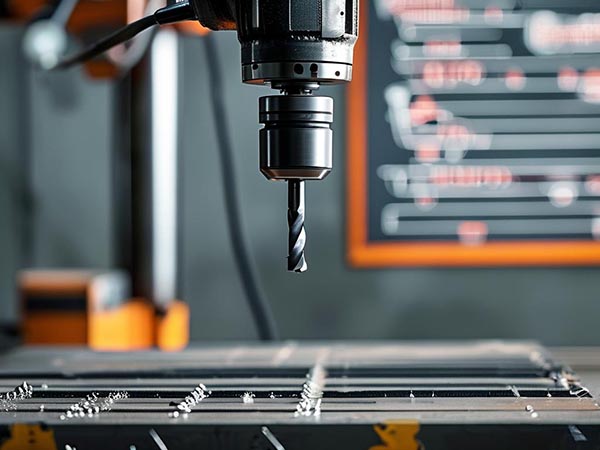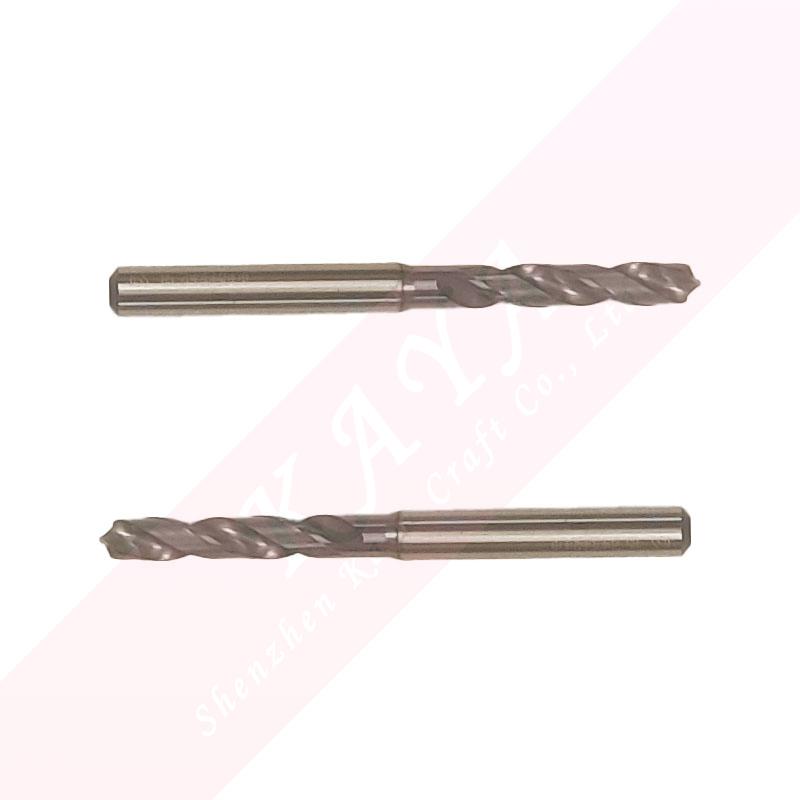How to Quickly Select the Most Suitable Drill Bit (Material / Speed / Feed Rate)
In today’s fiercely competitive global manufacturing landscape, the precision of drill bit selection has a direct impact on both processing costs and operational efficiency. Research shows that approximately 67% of international procurement errors stem from incorrect material or parameter selection, leading to a per-part cost increase of 12%–35%. Based on real-world data from industrial clients across 20 countries, this article provides a comprehensive breakdown of the dynamic matching logic between material properties, spindle speed, and feed rate. It covers region-specific demands, including stringent European and American certifications and high-humidity environments in Southeast Asia. By analyzing eight common failure scenarios and providing quick-reference parameter tables, we unveil the technical rationale behind typical selection pitfalls—empowering buyers to make informed decisions that balance performance and cost while avoiding hidden losses.
The 3 Golden Rules of Material Selection
1. Choosing Between General Steels and Hard Materials
- HSS (High-Speed Steel): Ideal for machining general steel and aluminum alloys; cost-effective but limited durability.
- Cobalt-Alloyed HSS (HSS-E): The go-to option for stainless steel and titanium alloys; 2–3x tool life improvement with ~30% higher price.
- Carbide: Essential for cast iron and composite materials; high cost, long lifespan, but prone to chipping if mishandled.
2. Common Pitfall:
- Case Study: A U.S. client used HSS to drill 304 stainless steel, increasing cost by $0.17 per hole.
- Solution: Switching to cobalt-alloyed bits reduced tooling costs by 41%.
3. Quick Material-to-Tool Reference:
| Workpiece Material | Recommended Tool Material | Expected Hole Count |
|---|
| Mild Carbon Steel | HSS | 200–300 |
| Stainless Steel | HSS-E (Cobalt Alloy) | 150–200 |
| Cast Iron | Carbide | 800–1200 |
Advanced Material Selection Tips (Details 90% of Buyers Miss)
1. Tool Coating Comparison Table
| Coating Type | Best For | Tool Life Boost | Cost Increase | Avoid With |
|---|
| TiN | General steel machining | 2–3x | +20% | High-silicon Al |
| TiAlN | High-temp alloys | 3–5x | +35% | Magnesium alloys |
| DLC | Precision medical parts | 5–8x | +50% | Hardened steels |
2. Cost-Performance Trade-Off Formula
- ROI Calculation:
- If (Per-hole cost difference) × (Total hole count) > (Tool cost difference), upgrading is justified.
- Case Demo: Cost comparison between HSS and cobalt bits for drilling 10,000 stainless-steel holes.
3. Special Material Drilling Solutions
- Laminated composites: Use step-point geometry (see patented cross-section design).
- Hardened steel (HRC 50+): Must use carbide + TiAlN coating.
Foolproof Speed and Feed Adjustment Method
1. Simplified RPM Calculation
- Formula:
- RPM = (Cutting speed × 1000) ÷ (π × Drill Diameter)
- Reference Cutting Speeds:
- Aluminum Alloys: 80–120 m/min
- Steels: 25–35 m/min
- Stainless Steel: 15–25 m/min
2. Feed Rate Tips:
- Thin sheets: Use high speed + low feed to avoid burrs.
- Deep holes: Reduce feed by 20% to prevent breakage.
- Pro Tip: Hearing a screech? Stop! Likely due to excessive feed.
3. Problem Diagnostics:
- Rapid wear → Excessive speed
- Rough hole walls → Uneven feed
- Breakage → Mismatch between material and drill bit
Optimal Speed & Feed Combinations
Quick Reference Table by Drill Diameter:
| Diameter | Aluminum (rpm / feed) | Stainless Steel (rpm / feed) | Cast Iron (rpm / feed) |
|---|
| 3mm | 8000 / 0.05 mm/rev | 2500 / 0.03 mm/rev | 4000 / 0.08 mm/rev |
| 8mm | 3000 / 0.15 mm/rev | 800 / 0.08 mm/rev | 1500 / 0.2 mm/rev |
| 12mm | 2000 / 0.25 mm/rev | 500 / 0.12 mm/rev | 1000 / 0.3 mm/rev |
Machine Correction Factors:
- Manual milling: RPM × 0.7, Feed × 0.8
- CNC center: Parameters can increase by 20%
- Bench drill: Feed must be reduced by 30% (limited rigidity)
Cooling Impact Table:
| Cooling Type | RPM Boost | Feed Boost | Best For |
|---|
| Dry Cut | — | — | Basic operations |
| External | +15% | +10% | Standard applications |
| Internal | +30% | +20% | Deep holes / hard cuts |
Regional Selection Preferences
1. Europe & North America:
- Material certification required (e.g., DIN/ISO)
- Automotive parts typically require coated drills
2. Southeast Asia:
- Rust resistance is critical (humidity often >80%)
- Reinforced drills needed for legacy machinery (shorter flute length preferred)
3. Middle East:
- Sand/dust-proof packaging required
- High-temperature resistant drills used for oil pipelines
Real-World Failure Case Studies
- Case 1: Hole Position Drift
- Root Cause: Incompatible point angle (130° for cast iron, 140° for stainless)
- Solution: Use drill point angle selector flowchart
- Case 2: Poor Chip Evacuation → Breakage
- Data: Comparison of 35° vs 30° helix angles with chip flow video and frame rate analysis
- Fix: Custom helix angle matching material properties
- Case 3: Premature Coating Failure
- Detection: Free coating adhesion test (scratch method report sample)
- Prevention: Store at 22 ± 3°C, <60% humidity
Most Frequently Asked Buyer Questions
- Q1: Why are some drill bits twice the price?
- A1: Mostly due to advanced coatings—e.g., TiN can triple tool life.
- Q2: Can the same bit drill multiple materials?
- A2: Temporarily yes, but frequent switching cuts tool life by 30%+.
- Q3: Can Chinese-made drills match imported quality?
- A3: Top-tier domestic tools now meet international standards.
- Q4: How do I know when to replace a drill bit?
- A4: Watch for: 15% increase in drilling time, diameter deviation >0.1mm, or abnormal vibration.
Conclusion
Drill bit selection is ultimately about striking a dynamic balance between material characteristics, machining parameters, and real-world conditions. From the thermal resistance curve of cobalt HSS to the microstructure of carbide, and from ISO certifications to protection against tropical humidity—every decision point must be grounded in data and experience. The coating comparison matrix, machine adjustment coefficients, and global certification maps provided here build a complete knowledge chain from theory to practice. By analyzing actual failure modes such as chip evacuation issues and early breakage warnings, we uncover the core logic of parameter optimization. Buyers are encouraged to create a sustainable, optimized selection system—unlocking a dual breakthrough in both productivity and cost control.




 We like to do design according to all the customers' requirements, or offer them our new designs. With strong OEM/ODM capabilities, we can fill your sourcing demands.
We like to do design according to all the customers' requirements, or offer them our new designs. With strong OEM/ODM capabilities, we can fill your sourcing demands.